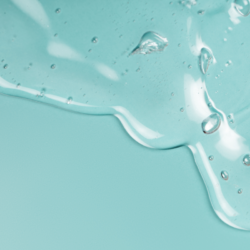With the arrival of fine weather, nature wakes up and the sun becomes ever more present. Trees start to put on their most beautiful foliage, while flowers dress the countryside in a thousand colours. So what would you say to following this trend and adding a touch of radiant beauty to your skin? Because let’s face it, there’s nothing sadder than a dull complexion in this magnificent landscape bursting with colour! Discover our easy, caring tips for a beautiful, sun-kissed complexion this summer.
What does the skin barrier do?
The cutaneous barrier, an essential component of our skin, plays a crucial role in protecting our body. Its main function is to act as a shield against external aggression, while regulating various physiological aspects.
Firstly, the skin barrier acts as a defence against pathogenic agents such as bacteria, viruses and fungi. This protective function is essential for preventing infection and disease. In fact, the skin is colonised by a microbial flora which, in normal conditions, presents no danger. However, if the skin barrier malfunctions, these micro-organisms can penetrate deeper into the skin or the body, leading to various health problems.
Secondly, the skin barrier plays a role in regulating the body’s water balance. It prevents excessive water loss, keeping the skin adequately hydrated and elastic. This function is essential for maintaining the body’s water balance and preventing dehydration.
The skin barrier is also involved in protecting against physical and chemical aggression. It minimises the effects of UV rays, pollutants and chemical substances that can be harmful to the skin and, by extension, to the body as a whole. This protection is all the more important in a context of growing pollution and increased exposure to ultraviolet rays due to the depletion of the ozone layer.
Finally, the skin barrier plays a role in sensory perception. It contains nerve endings that enable us to feel touch, pressure, pain and temperature. This function is fundamental for protection against hazards, as it enables us to react quickly to potentially harmful stimuli.
Why do I have age spots?
Age spots, also known as solar lentigos or sun spots, are common marks that appear on the skin, particularly with age. Several factors contribute to their formation, making it essential to understand them in order to better prevent and treat them.
Firstly, exposure to the sun plays a major role in the appearance of age spots. The sun’s ultraviolet (UV) rays stimulate the production of melanin, the pigment responsible for skin colour. Over time, excessive exposure to the sun can lead to an overproduction of melanin, leading to the appearance of dark spots on the most exposed areas, such as the face, hands and arms. This build-up of melanin is the skin’s protective reaction against UV damage, but it can lead to undesirable cosmetic changes.
Secondly, the skin’s natural ageing process is also a key factor. As we age, skin cell regeneration slows down, and the cumulative effects of sun damage become more apparent. This progressive degradation of the skin encourages the appearance of age spots, which are therefore more frequent and pronounced in older people.
Genetic factors can also influence susceptibility to age spots. Some people are naturally more prone to developing these marks because of their skin type or genetic inheritance. This genetic predisposition means that, despite taking appropriate precautions, some people may be more susceptible to developing age spots.
Finally, it is important to note that age spots are generally harmless, but they can sometimes be confused with more serious skin lesions, such as melanoma. Therefore, any change in the appearance of age spots, such as a change in colour or size, should be assessed by a healthcare professional.
What is radiant skin?
Radiant skin is skin that is healthy, luminous and free of imperfections. It’s skin that reflects the health and vitality of your body. Radiant skin has an even tone and smooth texture, whether on the face or the rest of the body! It’s moisturised, nourished and protected from the sun’s harmful UV rays.
The benefits of radiant skin
Having radiant skin has many benefits for your health and well-being. Here are some of the most important benefits:
- Glowing skin gives you confidence and makes you feel beautiful.
- Glowing skin can reduce the signs of ageing and wrinkles.
- Glowing skin can improve your mood and reduce stress.
- Glowing skin can protect your skin from damage caused by the sun’s harmful UV rays.
Give your skin a makeover
Spring is a time of renewal for nature, and that should also be the case for your skin. So it’s high time you rid it of the dead skin, impurities and toxins accumulated over the winter. This will encourage cell renewal. To do this, opt for gentle exfoliating products. Exfoliation is generally done once or twice a week. As well as purifying the skin’s surface, exfoliation also helps to oxygenate the tissues. This is the first step in reducing the tired, dull appearance of your skin as winter draws to a close.
Next, apply a moisturising cream suited to your skin type. While in winter we preferred rich, nourishing skin care products, this time we’re choosing a cream with a lighter texture. For the face, incorporate more specific skincare products into your routine toinstantly improve the skin’s natural radiance. Erborian Milk & Peel Masque is an energising recharge that boosts the beauty of the epidermis.
Can I do a peel at home?
Glycolicacid is the most widely used method of performing a peel at home. This acid, naturally present in sugar cane, is renowned for its effectiveness in exfoliating the top layer of the epidermis. This action contributes to cell renewal, giving the skin a smoother, more even and radiant appearance. Nevertheless, it should be applied with care, particularly to sensitive skin, to avoid any irritation.
Azelaic acid and vitamin C, although not peeling agents per se, play an important complementary role in improving skin quality. Azelaic acid, thanks to its antibacterial and anti-inflammatory properties, is particularly effective for people suffering from skin imperfections such as acne or redness. It helps to refine skin texture while reducing inflammation.
Vitamin C is renowned for its antioxidant properties and its role in collagen synthesis. Regular use can significantly improve skin tone, making it more radiant and reducing the signs of ageing. It also works in synergy with glycolic acid to boost skin radiance and firmness.
Finally, it is essential to stress the importance ofusing a sun cream after a peel. As the skin is more sensitive to UV rays following exfoliation, adequate sun protection is crucial to prevent sun damage and maintain the results obtained from the peel.
The big clean
After the long winter months, it’s time to focus on detoxifying our bodies for radiant, glowing skin. Spring is the ideal time to give our bodies a thorough cleansing. Just like our skin, our organs such as the liver, intestine, kidneys and lungs require a drainage process to eliminate the toxins and metabolic waste that accumulate over the winter period. Once our bodies have been detoxified, we’re ready to welcome the warmer weather with renewed energy and a radiant complexion. So take care of yourself and your skin with a healthy, balanced diet, plenty of hydration, active lifestyle and natural food supplements for healthy, radiant skin all summer long.
Imagine summer on your plate!
Firstly, it’s important to significantly increase our water intake, to better hydrate the body. Water is the key to keeping skin hydrated, elastic and young. Next, we need to adapt our diet to the season, firstly to maintain a balanced diet but above all to boost hydration.
The arrival of the summer season invites us to take full advantage of what nature has to offer. Summer market stalls are full of fresh fruit and vegetables for perfect skin. Choose foods rich in vitamins, antioxidants and omega-3 fatty acids, which are the best for our skin. Orange-coloured fruit such as melon, for example, is one of the most water-rich fruits. It provides a large amount of beta carotene, which helps to give the skin that lovely tanned glow. To replenish your supply of omega-3s, which are also essential for healthy skin, don’t forget to eat nuts, seeds, oily fish or suitable food supplements.
Food supplements to strengthen the skin barrier
Our favourite tip for a naturally radiant complexion is to take food supplements, in conjunction with a skincare routine tailored to your skin. These are nutrient concentrates designed to meet the needs that we sometimes have difficulty meeting with our diet alone.
If you find that your skin lacks radiance, Biocyte Extreme Radiance Radiant Complexion will be your best ally. Formulated with white mulberry, white tomato and a unique SkinAx2 complex, this dietary supplement helps to improve the radiance of the complexion and reduce brown spots and redness.
Protect your skin!
Protecting your skin from the sun’s rays is essential to prevent damage caused by UV rays, such as premature skin ageing, dark spots and an increased risk of skin cancer. So it’s important to use sun protection that’s suited to your skin type, applying it generously and reapplying it every two hours. You can also protect yourself by wearing light clothing and hats to cover areas exposed to the sun.
But there’s more to protecting your skin than just using sun cream. It’s important to nourish your skin from the inside out by eating antioxidant-rich foods such as fresh fruit and vegetables, nuts and seeds. These foods help protect the skin against free radicals, which are unstable molecules that damage skin cells.
Finally, to have radiant skin, it’s also important to cultivate happiness and positivity. Dynamic and fulfilling activities, such as yoga, dance or meditation, can help to reduce stress and stimulate blood circulation, which in turn promotes radiant skin. By looking after your skin inside and out, you can regain a luminous, radiant complexion!
Sources
- https://sante.gouv.fr/IMG/pdf/guide_alimentairetous.pdf
- https://www.ncbi.nlm.nih.gov/pmc/articles/PMC8480446/







